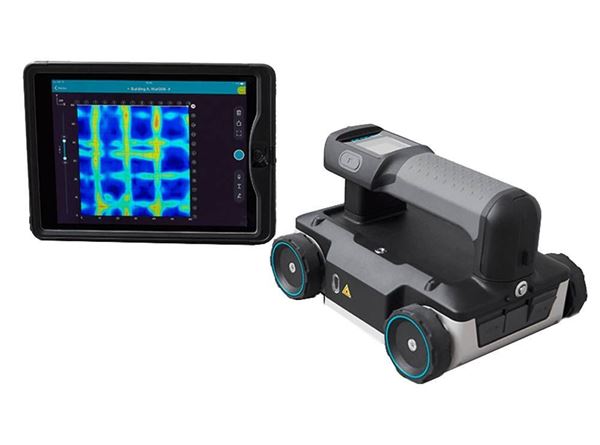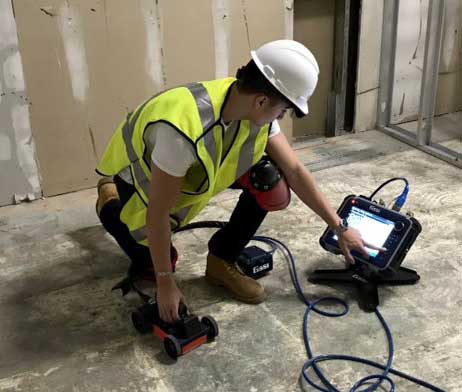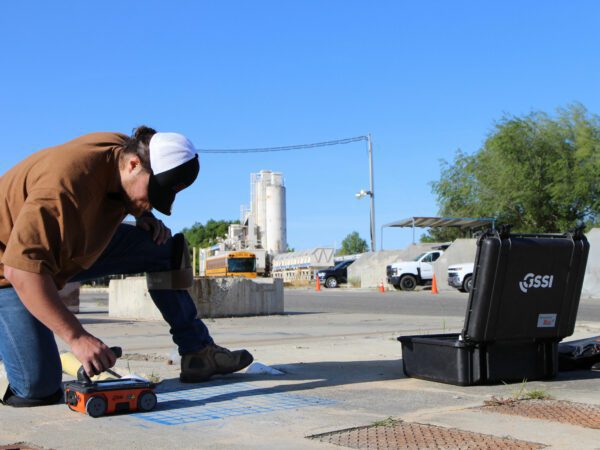Revealing the Power of RainierGPR Concrete Scanning Modern Technology
Revealing the Power of RainierGPR Concrete Scanning Modern Technology
Blog Article
Harness the Strategic Edge of Concrete Scanning for Unparalleled Job Success and Quality Control
In the realm of contemporary construction and infrastructure growth, the use of concrete scanning modern technology has become a pivotal tool for making sure task success and maintaining top quality standards. This innovative technique supplies a calculated edge by offering important understandings into the structural stability of concrete components, thereby enabling educated decision-making throughout the job lifecycle. By delving into the midsts of concrete compositions and uncovering covert anomalies, stakeholders can proactively resolve potential threats, improve procedures, and optimize resource allocation. However, real power of concrete scanning exists not only in its capability to boost task end results but additionally in its ability to change conventional techniques, setting a new benchmark for accuracy and effectiveness in the building and construction market.
The Importance of Concrete Scanning
Concrete scanning is a necessary step in building tasks to ensure the security and integrity of structures. By making use of different scanning modern technologies such as Ground Passing Through Radar (GPR) and electromagnetic induction, building and construction teams can non-destructively assess the subsurface of concrete structures to determine prospective threats like rebar, conduits, or post-tension wires. This info is important for project designers, supervisors, and contractors to make educated decisions and avoid pricey blunders during the building and construction procedure.
Among the main reasons why concrete scanning is so essential is its capability to stop crashes and injuries on the construction website. Accidentally cutting through a real-time electric channel or harmful post-tension cables can have catastrophic effects, not just in terms of security but additionally in regards to project delays and financial effects. By carrying out complete concrete scanning prior to any type of drilling, cutting, or coring tasks, construction groups can alleviate dangers and create a more secure working setting for everyone entailed.
In enhancement to security considerations, concrete scanning likewise plays an essential function in making certain the long-lasting durability and quality of the framework. By detecting any kind of flaws or abnormalities hidden beneath the surface, such as voids or delamination, very early intervention can be executed to deal with these problems prior to they intensify into even more substantial troubles. Inevitably, buying concrete scanning is a positive measure that can save time, cash, and sources in the long run, while likewise promoting the highest requirements of building and construction quality.
Advanced Technology for Precise Outcomes

By integrating these innovative innovations right into concrete scanning methods, building and construction groups can streamline workflows, lower job delays, and make sure the total quality and success of the task. The accuracy and efficiency provided by these devices add considerably to the project's success by facilitating informed improving and decision-making high quality assurance measures.
Enhancing Project Performance and Timelines

Additionally, concrete scanning allows groups to identify architectural weak points and potential dangers beforehand, enabling for timely remediation and protecting against crashes that can her explanation thwart project timelines. The real-time information provided by scanning devices assists in notified decision-making, leading to smoother coordination among different professions and stakeholders. This boosted collaboration reduces disputes, boosts productivity, and eventually accelerates task shipment.
Additionally, by proactively resolving concerns through concrete scanning, building and construction groups can stick to timetables better, lower downtime, and enhance resource allocation. The capability to identify surprise challenges and confirm architectural stability successfully adds to total job efficiency and timelines, ensuring successful outcomes and customer complete satisfaction.
Ensuring Safety And Security and Danger Reduction

Risk reduction approaches can be boosted via the detailed information offered by concrete scanning, allowing project teams to make educated decisions that decrease the possibility of unforeseen events. Furthermore, by accurately drawing up subsurface problems, specialists can stay clear of costly rework, hold-ups, and damage to existing frameworks, better adding to general job safety and security and success. Executing concrete scanning as a regular practice not only makes sure a safer workplace however likewise imparts confidence in stakeholders pertaining to the job's commitment to high quality and danger administration.
Quality Assurance Via Concrete Scanning
Concrete scanning plays a pivotal duty in upholding quality control criteria within building projects. By making use of sophisticated scanning technologies such as see this site Ground Passing Through Radar (GPR) and Concrete X-ray, task supervisors and engineers can guarantee the stability and quality of concrete structures. With concrete scanning, potential flaws, such as voids, cracks, or strengthening bar blockage, can be discovered non-destructively, permitting prompt interventions to preserve the structural stability of the task.
Quality guarantee through concrete scanning not just aids in recognizing existing concerns however additionally makes it possible for proactive procedures to avoid future problems that might compromise the security and long life of the structure. By performing thorough scans at essential stages of building and construction, groups can confirm the precision of structural plans, validate the placement of important components, and deal with any kind of inconsistencies immediately. This positive approach minimizes rework, reduces pricey hold-ups, and ultimately causes the shipment of high-grade, resilient frameworks that satisfy or go beyond sector criteria.
Final Thought
Finally, concrete scanning plays a vital function in ensuring task success, security, effectiveness, and high quality assurance. By using advanced innovation for exact results, building tasks can be completed with greater accuracy and within timelines. The critical edge provided by concrete scanning permits aggressive risk reduction and enhances general job management. Including concrete scanning into construction processes is Check Out Your URL crucial for accomplishing unequaled success and making certain quality end results - RainierGPR Concrete Scanning.
In the realm of modern construction and framework development, the use of concrete scanning modern technology has emerged as a critical device for ensuring job success and preserving top quality standards. By incorporating these advanced technologies into concrete scanning practices, building teams can streamline process, reduce project delays, and make certain the overall top quality and success of the project.Offered the essential nature of job efficiency and timelines in building management, the focus now moves towards making certain safety and security and mitigating threats within the project setting.Concrete scanning plays an essential duty in supporting high quality assurance requirements within construction projects. By making use of innovative scanning innovations such as Ground Permeating Radar (GPR) and Concrete X-ray, job supervisors and designers can make sure the stability and high quality of concrete frameworks.
Report this page